Largest asteroids
Contents
One of Earth's greatest threats and mankind's biggest fears is the catastrophic impact of an asteroid and with good reason. Evidence remains of the devastation such impacts from the early history of Earth's formation caused. None so frightening as the impact that nearly wiped out all life a mere 66 million years ago.
Aside from the asteroid that reduced the dinosaur population to extinction, two events in recent history have given credence to the monitoring and calculating of asteroids within our solar system. The Tunguska event in 1908 which destroyed over 1290 km (800 miles) worth of forest and the Chelyabinsk Meteor in 2013 who snuck into Earth's atmosphere undetected. Neither made landfall and exploded shortly before hitting the Earth but the devastation they created makes many question, what if they had hit the ground?
Today, we have several monitoring programs such as NASA's Near-Earth Objects Observation program which catalogs and calculates the trajectories of any potential threats to Earth. Large telescopes such as the Panoramic Survey Telescope & Rapid Response System (Pan-STARRS) watch the skies diligently, keeping track of all objects in our skies to make sure that if there is a threat, we would see it coming and be capable of minimizing or eliminating the devastation it could cause on impact.
List of the largest asteroids
Currently, the largest asteroids listed to date primarily exist within the asteroid belt between Mars and Jupiter. Here is a list of the 15 largest asteroids in order of size.
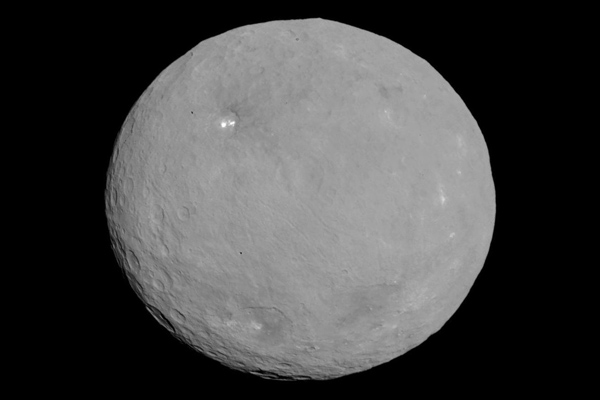 Ceres / nasa.gov
Ceres / nasa.gov1 Ceres — although it is now listed as a dwarf planet, it is still considered the largest asteroid in our solar system. It orbits the sun within the asteroid belt (occasionally called the Ceres asteroid belt) in between Mars and Jupiter. It is about 945 km (587 miles) in size making it the largest asteroid.
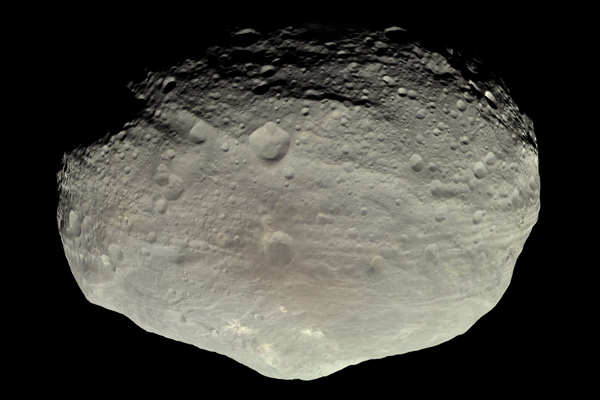 Color image of Vesta taken by Dawn / unmannedspaceflight.com
Color image of Vesta taken by Dawn / unmannedspaceflight.com4 Vesta — the second-largest asteroid in the solar system at 525 km (326 miles) in size and is also located in the asteroid belt between Mars and Jupiter. It contributes about 9% of the total mass of the entire belt. It has an orbital time of 3.63 years and it has an axial tilt of 29 degrees. This asteroid is on a list of objects that are under consideration as a dwarf planet.
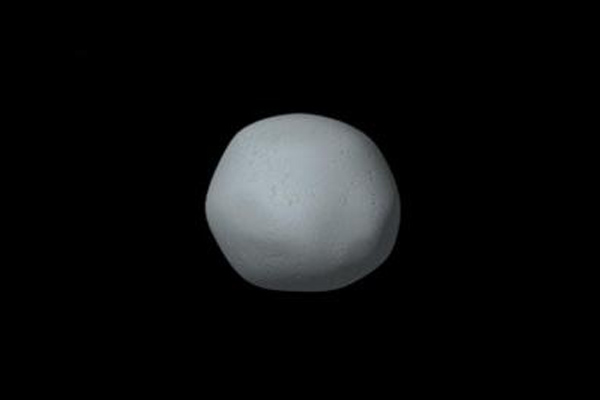 Model of the asteroid Pallas / nasa.gov
Model of the asteroid Pallas / nasa.gov2 Pallas — covers about 7% of the total mass of the asteroid belt and is the third largest asteroid in the solar system at 512 km (318 miles) in size. It's on the list of discovered objects for consideration as a dwarf planet (along with Sedna, Orcus, Quaoar, 2002 TX 300, 2002 AW 197, Varuna, Ixion, Vesta, and Hygiea) but at this time it is still considered an asteroid.
10 Hygiea — is the fourth largest asteroid in our solar system at about 350 to 500 km (217 to 300 miles) in size. It is also under consideration as a dwarf planet versus an asteroid due to its mass and shape. It is a C-type asteroid because it consists primarily of a carbon type surface.
704 Interamnia — at 350 km (217.48 miles) in diameter, taking up 1.2% of the total mass of the belt, 704 Interamnia is the fifth largest asteroid in the solar system. Because it is an F-type asteroid with a low albedo very little study can be done, it is too difficult to see.
52 Europa — is an asteroid located within the asteroid belt. This asteroid is about 315 km (195 miles) in diameter with a mass of 3.27×1019 kg. It is a C-type asteroid making it very dark in appearance.
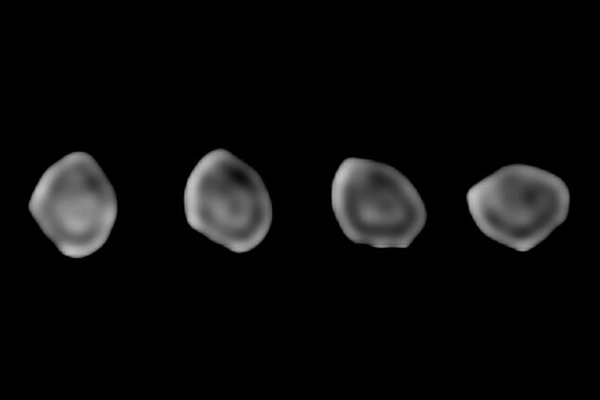 A sequence of images of asteroid 511 Davida / keckobservatory.org
A sequence of images of asteroid 511 Davida / keckobservatory.org511 Davida — this asteroid's estimated at 270 to 310 km (167 to 192 miles) in diameter and covers 1.5% of the total mass of the belt. Its low albedo of 0.054–0.066 makes it pretty dark and difficult to see. It is a C-type asteroid which means it has a carbonaceous compound which attributes to its darkness.
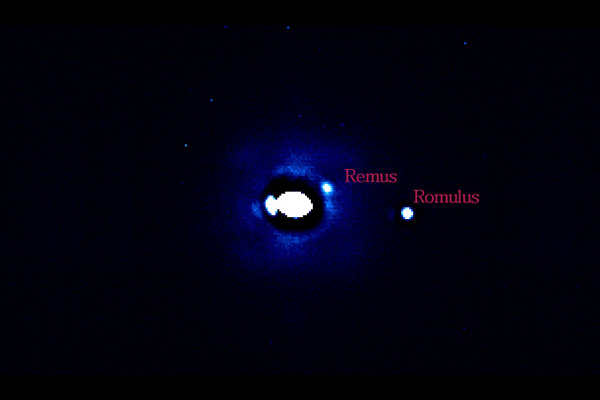 Adaptive Optics observations of 87 Sylvia, showing its two moons, Remus and Romulus / wikipedia.org
Adaptive Optics observations of 87 Sylvia, showing its two moons, Remus and Romulus / wikipedia.org87 Sylvia — unlike most asteroids, Sylvia has a strange characteristic in which it has a moon, two, in fact, Romulus and Remus. This is unusual because asteroids do not typically have moons. Discovered in 1866, Sylvia is about 150 km (93 miles) in diameter.
65 Cybele — an X-type asteroid (extremely dark, carbonaceous) with an albedo of 0.071. Ernst Tempel discovered this nearly invisible asteroid in 1861 which was an incredible feat for the time period. It's been estimated at being 205 miles (330 km) in diameter which makes it the 9th largest of the asteroids. Cybele is on the outer part of the belt.
15 Eunomia — this asteroid occupies the inner part of the belt and is the largest of the S-type (stony) asteroids. It's estimated at taking up 1% of the total mass of the belt, but this is uncertain because diameter and mass of this and many of the asteroids is not certain. It's discovery was in 1851 by Annibale de Gasparis.
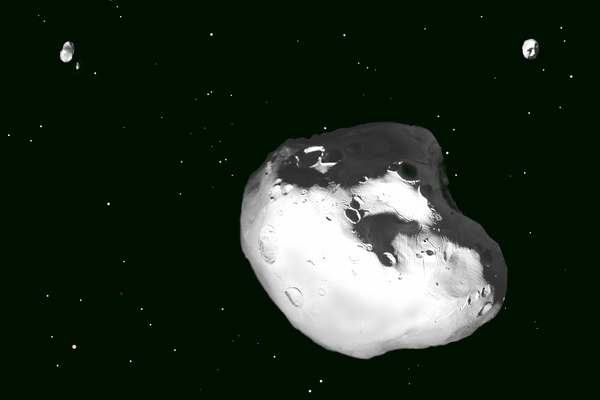 Illustration of Juno based on photos made in 1996 / harvard.edu
Illustration of Juno based on photos made in 1996 / harvard.edu3 Juno — discovered in 1804 by Karl L. Harding, Juno is the second largest S-type asteroid in the belt next to 15 Eunomia. When first discovered (was the third asteroid in the belt spotted) it was at first thought of as a planet. In the 1850's it was reclassified as an asteroid because of its small and irregular shape.
 Artist's impression of 624 Hektor / keckobservatory.org
Artist's impression of 624 Hektor / keckobservatory.org624 Hektor — this asteroid was captured by Jupiter's gravitational pull and has become a Trojan moon of Jupiter. Hektor is actually a binary asteroid consisting of two smaller asteroids held together by a gravity. Another unusual aspect to Hektor is that it has its own "moon". A smaller satellite orbits the asteroid but has not been given a name as of yet, its provisional name is S/2006 (624) 1.
31 Euphrosyne — of the over 30 asteroids discovered from the belt, Euphrosyne is by far the darkest. It is a C-type asteroid and orbits at the very edge of the belt and has a high mass so it is solid and not porous. Euphrosyne has been mostly studied via radar so much of the information is only estimated.
88 Thisbe — Discovered in 1866 by C. H. F. Peters, the 14th largest asteroid in the solar system is about 232 km (144 miles) in diameter. Not much else is known at this time as the asteroid is too far and too dark to see at this moment.
324 Bamberga — Bamberga's discovery was in 1892 by Johann Palisa and is bright enough that its discoverer sighted it using just a pair of powerful binoculars, almost as bright as Saturn's satellite Titan. This is unusual because it is a C-type asteroid and they are not known as very bright.
Video Gallery
-
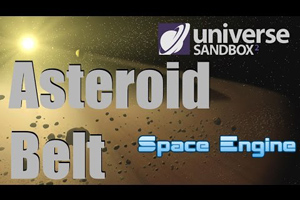 Ceres/Vesta/Hygiea/Pallas - Universe Sandbox 2
Ceres/Vesta/Hygiea/Pallas - Universe Sandbox 2
-
 Top 10 Most Interesting Asteroids
Top 10 Most Interesting Asteroids
-
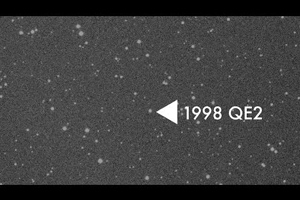 How Are Large Asteroids Tracked?
How Are Large Asteroids Tracked?